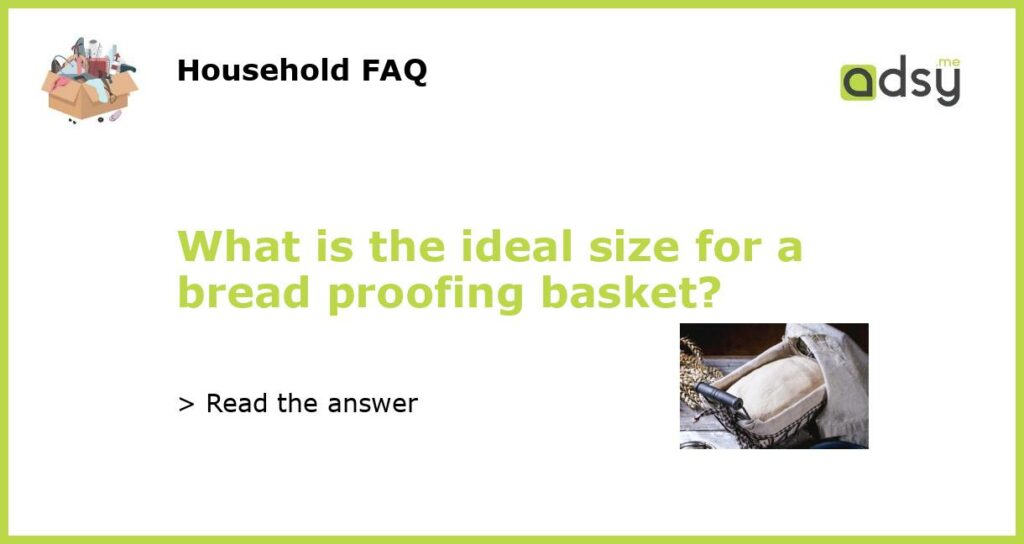Understanding the Importance of Bread Proofing Baskets
Bread proofing baskets, also known as bannetons, play an essential role in the process of bread-making. These baskets serve as containers where the bread dough is proofed or allowed to rise before baking. Choosing the right size for your bread proofing basket is crucial, as this can affect the final outcome of your bread. Here are some factors to consider in determining the ideal size for your bread proofing basket.
Size Matters: Consider the Amount of Dough
The first factor in choosing the ideal size for your bread proofing basket is the amount of dough you will be working with. The basket should be able to accommodate the volume of dough while allowing enough room for the bread to rise properly. It is recommended to use a bread proofing basket that is at least one-third larger than the amount of dough you will be using.
Shape Matters: Choose the Right Shape for Your Bread
The shape of your bread proofing basket should also be considered. Most bannetons come in circular or oblong shapes. If you will be making round breads like boules, choose a round-shaped proofing basket. If you will be making longer loaves like baguettes, choose an oblong-shaped basket.
Consider Your Baking Equipment
Another factor to consider when choosing the ideal size for your bread proofing basket is the size of your baking equipment. Make sure the basket can fit comfortably in your oven and baking stone or sheet. The size of your proofing basket should also allow enough space for the bread to rise without touching the sides of your baking vessel.
Factors to Avoid When Choosing the Ideal Bread Proofing Basket Size
While there are factors to consider in choosing the ideal size for your bread proofing basket, there are also some things to avoid. One is choosing a basket that is too small for your dough. This can cause the bread to stick to the sides and result in a misshapen loaf. Another is choosing a basket that is too large, as this can cause the bread to spread out too much and collapse during baking.






